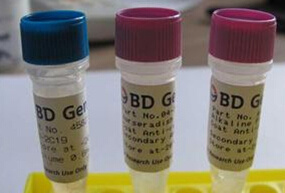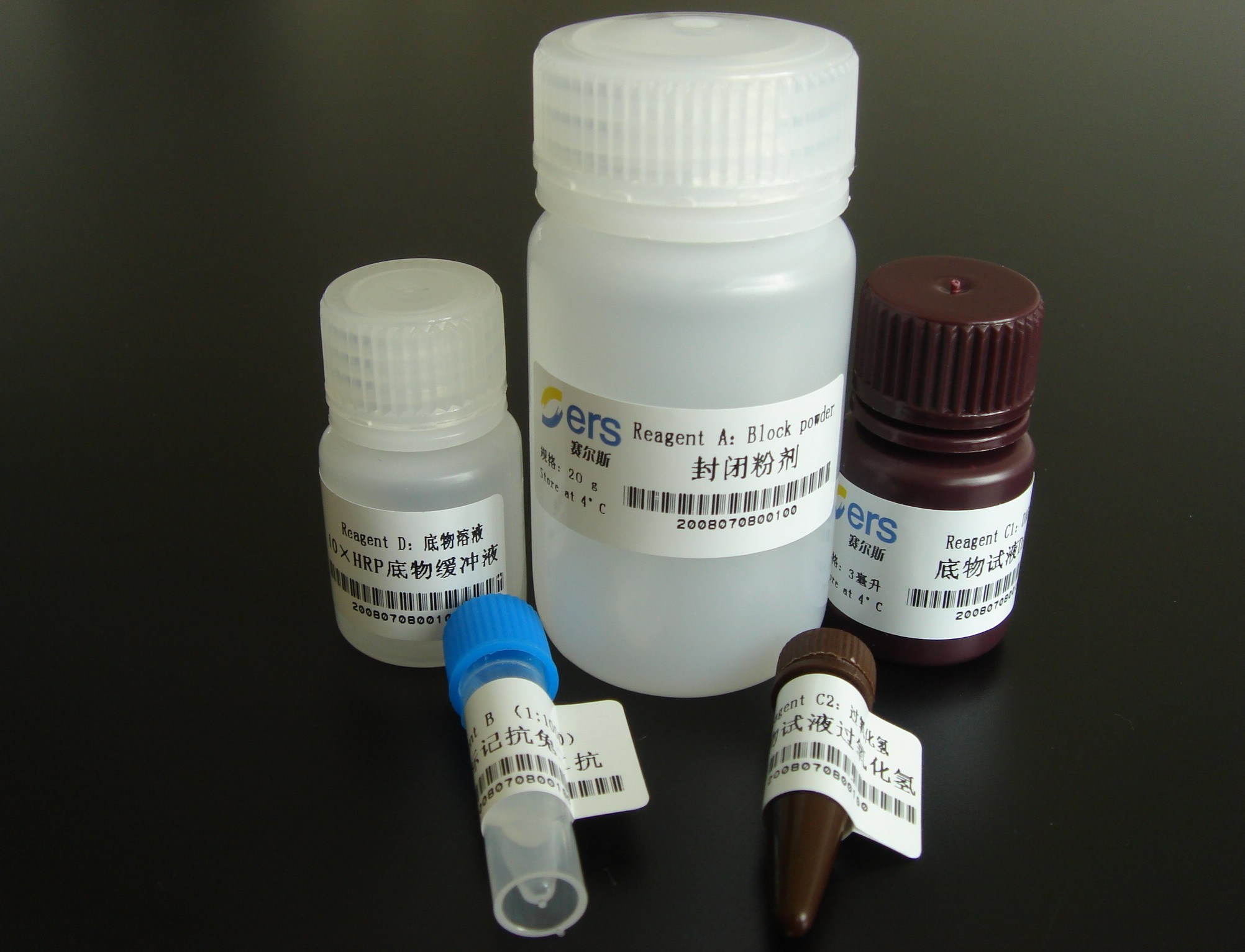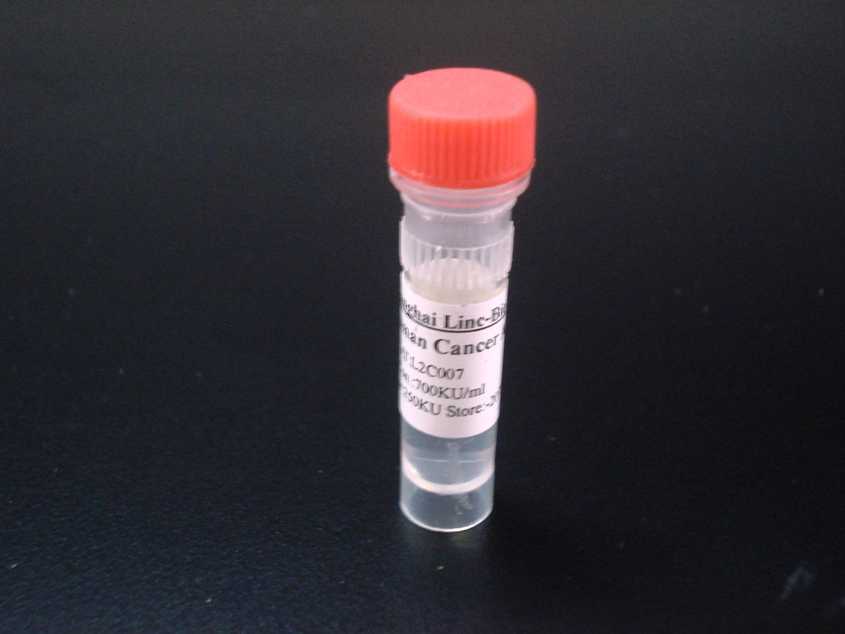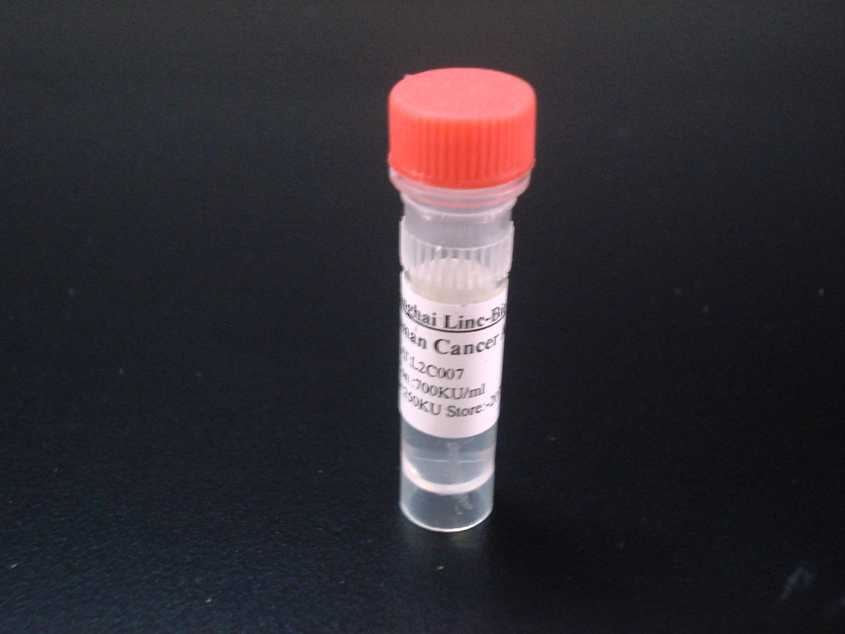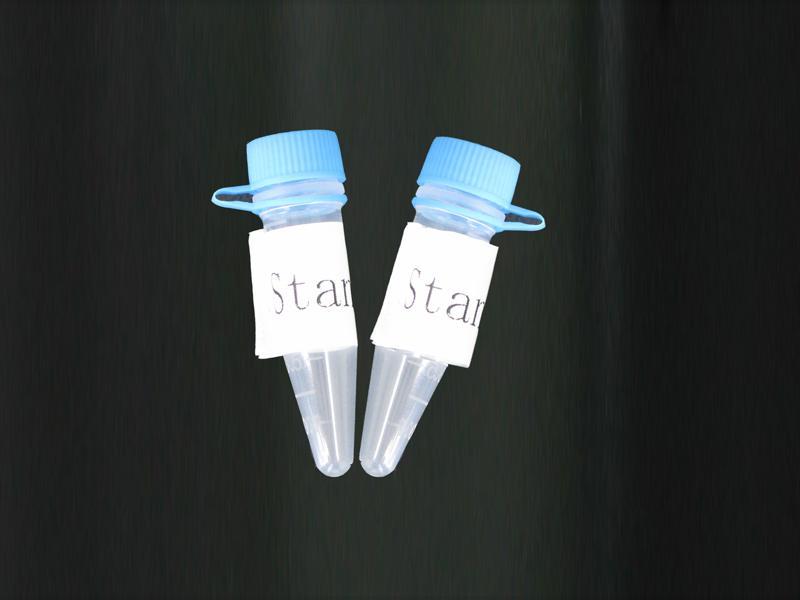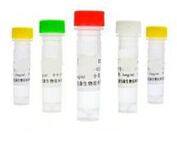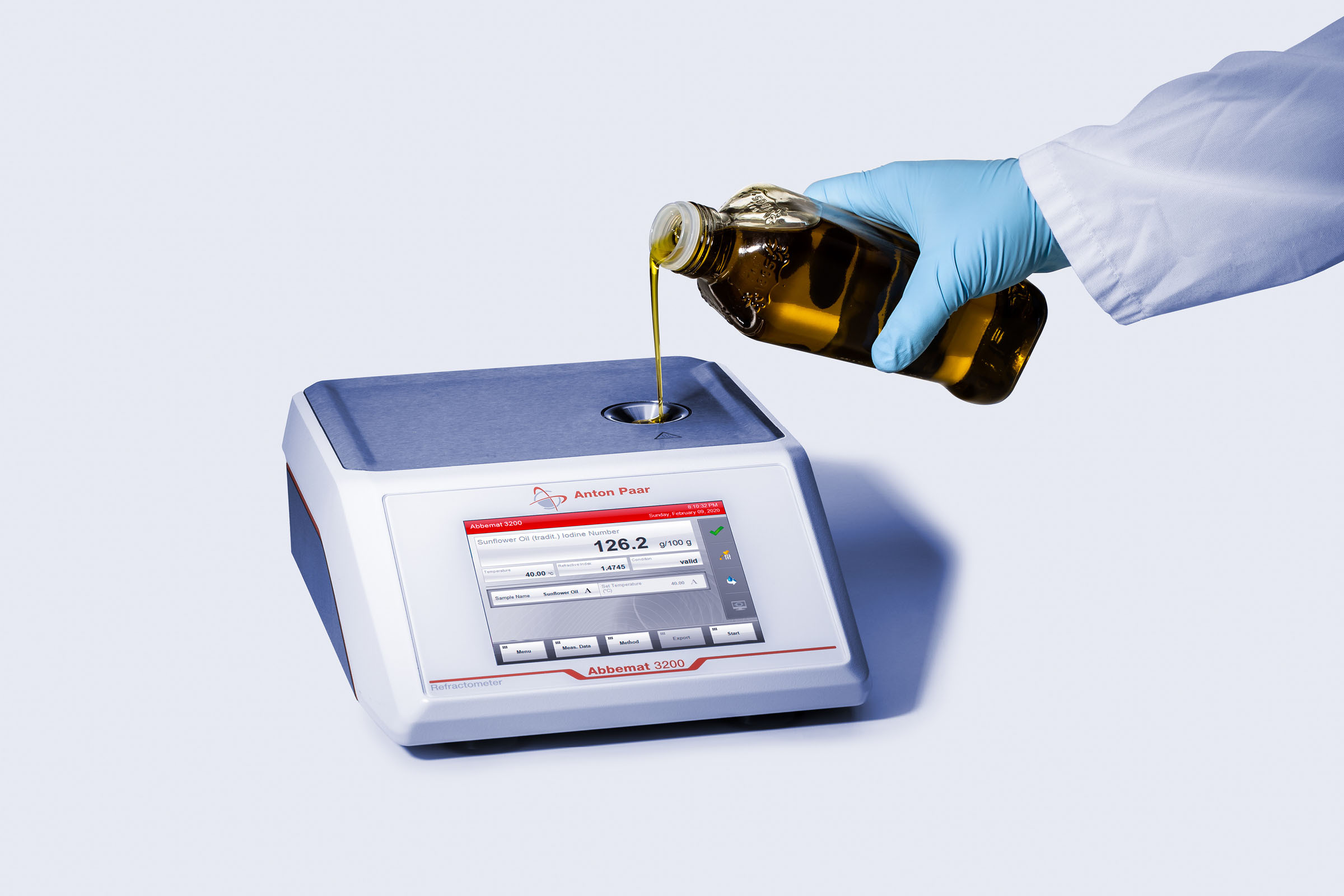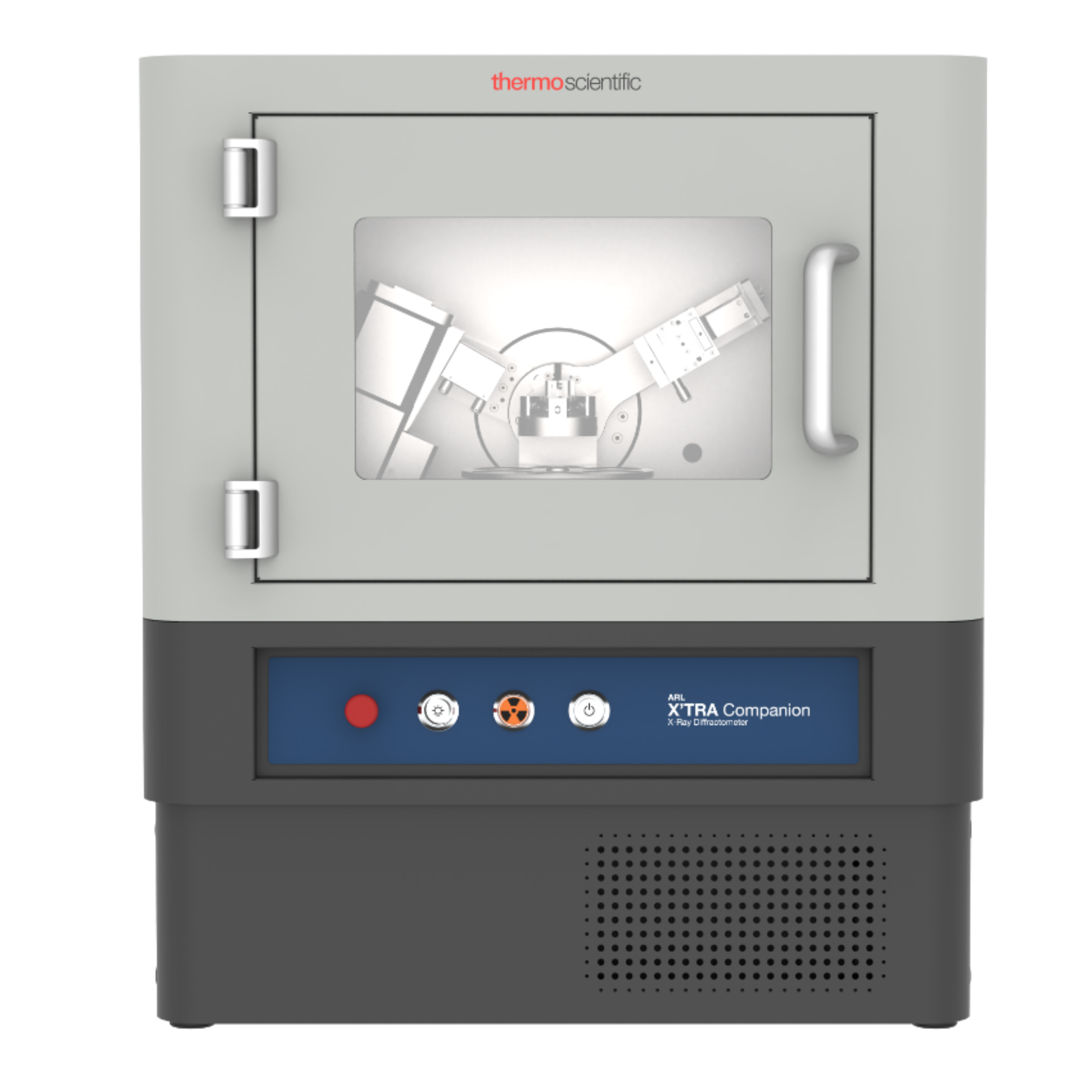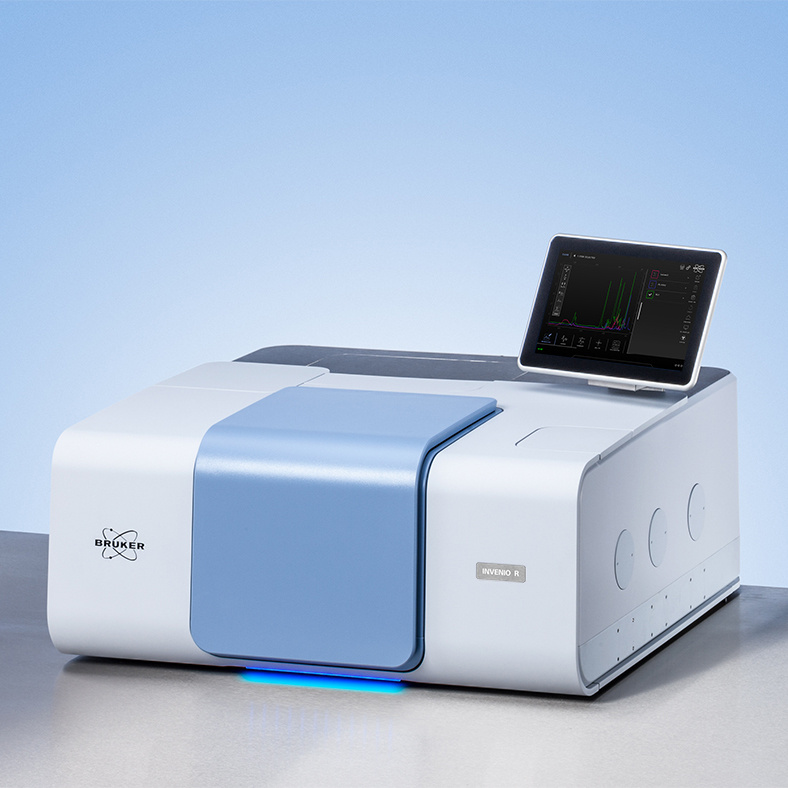英文名称 Simian Rotavirus VP4
中文名称 辛诺柏病毒糖VP4/外层衣壳蛋白VP4/猴轮状病毒VP4抗体
别 名 Hemagglutinin; VP4_ROTSS; Outer Capsid protein VP4 (Hemagglutinin); Outer capsid protein VP4; RVA s4gp1; RVAs4gp1; VP4; Outer capsid protein VP4; Outer capsid protein VP5*; Simian Rotavirus VP5*.
辛诺柏病毒糖VP4/外层衣壳蛋白VP4/猴轮状病毒VP4抗体
说 明 书 0.2ml
研究领域 细胞生物 细菌及病毒
抗体来源 Rabbit
克隆类型 Polyclonal
交叉反应 Simian Rotavirus
产品应用 WB=1:100-500 ELISA=1:500-1000 IHC-P=1:100-500 IHC-F=1:100-500 ICC=1:100-500 IF=1:100-500 (石蜡切片需做抗原修复)
not yet tested in other applications.
optimal dilutions/concentrations should be determined by the end user.
分 子 量 58/85kDa
性 状 Lyophilized or Liquid
浓 度 1mg/1ml
免 疫 原 KLH conjugated synthetic peptide derived from Simian Rotavirus VP4
亚 型 IgG
纯化方法 affinity purified by Protein A
储 存 液 Preservative: 15mM Sodium Azide, Constituents: 1% BSA, 0.01M PBS, pH 7.4
保存条件 Store at -20 °C for one year. Avoid repeated freeze/thaw cycles. The lyophilized antibody is stable at room temperature for at least one month and for greater than a year when kept at -20°C. When reconstituted in sterile pH 7.4 0.01M PBS or diluent of antibody the antibody is stable for at least two weeks at 2-4 °C.
辛诺柏病毒糖VP4/外层衣壳蛋白VP4/猴轮状病毒VP4抗体产品介绍 background:
Simian Rotavirus VP4 (Outer Capsid protein VP4) (Hemagglutinin) functions as a spike-forming protein that mediates virion attachment to the host epithelial cell receptors and plays a major role in cell penetration, determination of host range restriction and virulence. Rotavirus entry into the host cell probably involves multiple sequential contacts between the outer capsid proteins VP4 and VP7, and the cell receptors. According to the considered strain, VP4 seems to essentially target sialic acid and/or the integrin heterodimer ITGA2/ITGB1. VP4 is a homotrimer and adopts a dimeric appearance above the capsid surface, while forming a trimeric base anchored inside the capsid layer. The priming trypsin cleavage triggers its rearrangement into rigid spikes with approximate two-fold symmetry of their protruding parts. After an unknown second triggering event, cleaved VP4 may undergo another rearrangement, in which two VP5* subunits fold back on themselves and join a third subunit to form a tightly associated trimer, shaped like a folded umbrella. VP4 interacts with host ITGA2 (via ITAG2 I-domain); this interaction occurs when ITGA2 is part of the integrin heterodimer ITGA2/ITGB1. VP4 interacts with host integrin heterodimer TGA4/ITGB1 and ITGA4/ITGB7. Proteolytic cleavage by trypsin results in activation of VP4 functions and greatly increases infectivity. The penetration into the host cell is dependent on trypsin treatment of VP4. It produces two peptides, VP5* and VP8* that remain associated with the virion.
Function:
Spike-forming protein that mediates virion attachment to the host epithelial cell receptors and plays a major role in cell penetration, determination of host range restriction and virulence. Rotavirus entry into the host cell probably involves multiple sequential contacts between the outer capsid proteins VP4 and VP7, and the cell receptors. According to the considered strain, VP4 seems to essentially target sialic acid and/or the integrin heterodimer ITGA2/ITGB1 (By similarity).
Outer capsid protein VP5*: forms the spike 'foot' and 'body'. Acts as a membrane permeabilization protein that mediates release of viral particles from endosomal compartments into the cytoplasm. In integrin-dependent strains, VP5* targets the integrin heterodimer ITGA2/ITGB1 for cell attachment (By similarity).
VP8* forms the head of the spikes. It is the viral hemagglutinin and an important target of neutralizing antibodies. In sialic acid-dependent strains, VP8* binds to host cell sialic acid, most probably a ganglioside, providing the initial contact.
Subunit:
VP4 is a homotrimer (Potential). VP4 adopts a dimeric appearance above the capsid surface, while forming a trimeric base anchored inside the capsid layer. Only hints of the third molecule are observed above the capsid surface. It probably performs a series of molecular rearrangements during viral entry. Prior to trypsin cleavage, it is flexible. The priming trypsin cleavage triggers its rearrangement into rigid spikes with approximate two-fold symmetry of their protruding parts. After an unknown second triggering event, cleaved VP4 may undergo another rearrangement, in which two VP5* subunits fold back on themselves and join a third subunit to form a tightly associated trimer, shaped like a folded umbrella. VP5* is a homotrimer (Potential). The trimer is coiled-coil stabilized by its C-terminus, however, its N-terminus, known as antigen domain or 'body', seems to be flexible allowing it to self-associate either as a dimer or a trimer. The two- to three-fold reorganization and fold-back of VP5* may be linked to membrane penetration, by exposing its hydrophobic region. Interacts with host ITGA2 (via ITAG2 I-domain); this interaction occurs when ITGA2 is part of the integrin heterodimer ITGA2/ITGB1. Interacts with host integrin heterodimer ITGA4/ITGB1 and ITGA4/ITGB7.
Subcellular Location:
Outer capsid protein VP4: Virion. Host rough endoplasmic reticulum (Potential). Note=Immature double-layered particles assembled in the cytoplasm bud across the membrane of the endoplasmic reticulum, acquiring during this process a transient lipid membrane that is modified with the ER resident viral glycoproteins NSP4 and VP7; these enveloped particles also contain VP4. As the particles move towards the interior of the ER cisternae, the transient lipid membrane and the non-structural protein NSP4 are lost, while the virus surface proteins VP4 and VP7 rearrange to form the outermost virus protein layer, yielding mature infectious triple-layered particles.
Outer capsid protein VP8*: Virion. Note=Outer capsid protein.
Outer capsid protein VP5*: Virion. Note=Outer capsid protein.
Post-translational modifications:
Proteolytic cleavage by trypsin results in activation of VP4 functions and greatly increases infectivity. The penetration into the host cell is dependent on trypsin treatment of VP4. It produces two peptides, VP5* and VP8* that remain associated with the virion.
Similarity:
Belongs to the rotavirus VP4 family.
Gene ID:
7011406
Database links:
Entrez Gene: 7011406 ROTSS
SwissProt: P12473 ROTSS
Important Note:
This product as supplied is intended for research use only, not for use in human, therapeutic or diagnostic applications.
辛诺柏病毒糖VP4/外层衣壳蛋白VP4/猴轮状病毒VP4抗体
hz-0938R NKG2D/CD314/KLRK1 NK细胞受体2D抗体
hz-0166R NKR/Neurokin B receptor 神经激肽B受体抗体
hz-0688R Nm23/NME1/NME2 肿瘤转移抑制基因抗体
hz-1066R NME1/Nm23-H1/NDKA 肿瘤抑制基因抗体
hz-1073R Nm23-H2 肿瘤抑制基因抗体
hz-5097R NNT 烟酰胺核苷酸转氢酶抗体
hz-0075R Nociceptin 孤菲肽/痛敏肽抗体
hz-0181R Nociceptin receptor 孤菲肽受体/痛敏肽受体抗体
hz-0129R Nogo R 轴索过度生长抑制因子受体/Nogo受体抗体
hz-0134R Nogo-A 轴索过度生长抑制因子-A抗体
hz-1315R Nogo-B/A 轴索过度生长抑制因子-B/A抗体
hz-0156R nNos/NOS-1 一氧化氮合成酶-1抗体(神经型)
hz-0162R NOS-2/iNOS 一氧化氮合成酶-2抗体(诱导型)
hz-2072R NOS-2/iNOS 一氧化氮合成酶-2抗体(诱导型)
hz-0163R NOS-3/eNOS 一氧化氮合成酶-3抗体(内皮型)
hz-3447R Phospho-eNOS(Ser1177) 磷酸化一氧化氮合成酶3抗体(内皮型)
hz-3589R Phospho-eNOS (Thr113) 磷酸化一氧化氮合成酶3抗体(内皮型)
hz-3731R Phospho-eNOS(Thr495) 磷酸化一氧化氮合成酶3抗体(内皮型)
hz-1335R Notch1/MOTC 跨膜受体蛋白Notch-1抗体
hz-2378R Notch 2 跨膜受体蛋白Notch-2抗体
hz-1812R Notch3/4 跨膜受体蛋白Notch-3抗体
hz-3889R NOX2/gp91phox NADPH氧化酶2抗体
hz-3891R NOXA2/p67phox NADPH氧化酶活化蛋白1抗体
hz-1091R Nox4/NADH NADPH氧化酶4抗体
hz-1537R NADPH 还原型辅酶Ⅱ抗体
hz-1069R proCNP/NPPC 促尿钠排泄肽前体C抗体
hz-0353R Nonylphenol 壬基酚抗体
hz-3308R Phospho-NPM (Ser4) 磷酸化核仁磷酸蛋白抗体
hz-3309R Phospho-NPM (Thr95) 磷酸化核仁磷酸蛋白抗体
hz-3310R Phospho-NPM (Thr199) 磷酸化核仁磷酸蛋白抗体
hz-2348R NPRB 利钠肽受体B抗体
hz-2333R NPRC/Natriuretic Peptide Receptor C 利钠肽受体C抗体
hz-0071R NPY/Neuropeptide Y 神经肽Y抗体
hz-0937R NPY2R 神经肽Y受体2抗体
hz-6968R HLA DM 组织相容性复合体α抗体
hz-1070R NPY1R 神经肽Y1受体抗体
更多![]()
企业名称
上海沪震实业有限公司
企业信息已认证
企业类型
信用代码
310112001371133
成立日期
2012-05-08
注册资本
100
经营范围
实验室分析仪器、仪器仪表、电子产品、化工产品及原料(除危险化学品、监控化学品、烟花爆竹、民用爆炸物品、易制毒化学品)、一类医疗器械的销售,实业投资,投资咨询(除经纪),景观设计,从事生物科技领域内的技术开发、技术转让、技术咨询、技术服务,建筑装修装饰建设工程专业施工(凭许可资质经营),汽车租赁(除融资租赁)。【依法须经批准的项目,经相关部门批准后方可开展经营活动】
上海沪震实业有限公司
公司地址
上海市杨浦区密云路1018号复旦科技园808室
客服电话



